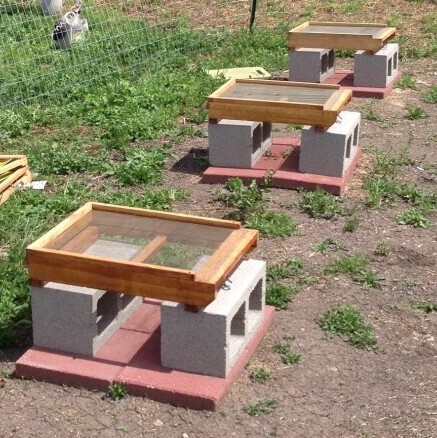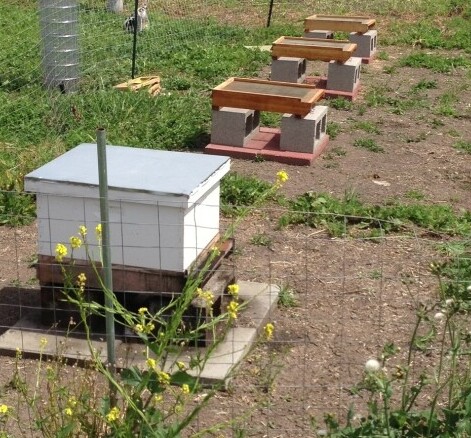Selecting the ideal location for your beehives is crucial for the health and productivity of your bees. A well-chosen site can enhance honey production, reduce stress on the bees, and make hive management easier. Here are key factors to consider when choosing a location for your beehives:


1. Sunlight Exposure
- Morning Sunlight: Position your hives to receive early morning sunlight. This helps wake the bees earlier in the day, allowing them to start foraging sooner. A southeast-facing hive entrance is ideal.
- Partial Shade: In hot climates, some afternoon shade can prevent the hives from overheating. However, avoid placing hives in full shade, as this can make the bees sluggish and promote moisture buildup, which can lead to mold.
2. Wind Protection
- Shelter from Wind: Wind can stress bees and make it difficult for them to navigate. Place your hives near natural windbreaks such as trees, shrubs, or a fence. Ensure the windbreak does not block the hive entrance.
- Hive Stability: Secure the hives against strong winds, especially if they are elevated. Consider using hive stands or securing the hives to the ground if you’re in a windy area.
3. Water Source
-
- Proximity to Water: Bees need water to regulate hive temperature and dilute honey for feeding larvae. Ensure there’s a nearby water source, such as a pond, stream, or birdbath. If natural water isn’t available, provide a shallow dish with pebbles for landing. YouTube link is a water option I use.
- https://youtube.com/shorts/B_nqUxQ0u5g?si=e9lppt5GkvulzTEx
- Avoid Contaminated Water: Ensure the water source is free from pesticides, fertilizers, and other chemicals that could harm the bees.
4. Forage Availability
- Access to Diverse Flora: Place your hives in an area rich in flowering plants, trees, and shrubs. A diverse array of blooms throughout the season ensures bees have a consistent source of nectar and pollen.
- Crop Proximity: If you’re near agricultural areas, ensure the crops are bee-friendly and not heavily treated with pesticides.
5. Safety and Accessibility
- Safe Distance from High Traffic Areas: Keep hives away from areas with heavy foot traffic, pets, or livestock to reduce the risk of stings. Place hives away from playgrounds, pathways, and entrances to buildings.
- Ease of Access for Beekeeper: Ensure the location is easily accessible for hive inspections, honey harvesting, and routine maintenance. A level site with space around the hives for equipment and maneuvering is ideal.
6. Legal Considerations
- Check Local Regulations: Before placing hives, check local ordinances or homeowners’ association rules regarding beekeeping. Some areas have restrictions on hive numbers, placement, and even require permits.
- Respect Neighbors: Consider your neighbors when placing hives. Ensure the flight path of the bees does not cross over neighboring properties. Installing a tall fence or hedge around the apiary can help direct bees to fly higher.
7. Pest and Predator Control
- Minimize Exposure to Predators: Place hives in areas less likely to attract predators such as bears, skunks, or raccoons. In bear-prone areas, electric fencing is recommended.
- Reduce Risk of Insect Pests: Avoid placing hives near ant hills or areas with heavy wasp activity, as these can lead to hive invasions.
8. Soil and Drainage
- Good Drainage: Avoid placing hives in low-lying areas prone to flooding. Wet ground can lead to damp hives, which promotes disease. Ensure the ground is well-drained and slightly elevated if necessary.
- Stable Ground: Ensure the soil is firm and stable to prevent the hives from tilting or sinking over time. Use hive stands to elevate hives off the ground.
9. Orientation of Hive Entrances
- Facing Away from Prevailing Winds: Position hive entrances away from the direction of prevailing winds to reduce cold drafts entering the hive.
- Ease of Flight Path: Ensure bees have a clear flight path to and from the entrance, free from obstructions like tall grasses or dense vegetation.
10. Distance from Human Activity
- Quiet and Undisturbed: Bees prefer quiet environments. Placing hives in a secluded area reduces disturbances and stress on the bees, leading to better productivity.
- Visibility and Monitoring: While seclusion is important, the location should still be visible enough for you to monitor the hives for any signs of trouble, such as pests or diseases.
Conclusion
Selecting the right location for your beehives is a balance between the bees’ needs and practical considerations for hive management. By carefully evaluating factors such as sunlight, wind, water sources, forage availability, and safety, you can create an optimal environment for your bees to thrive. A well-situated apiary not only benefits the bees but also enhances your beekeeping experience, leading to healthier hives and more productive honey yields.
If you would like to receive the monthly newsletter from Beewhisperer360 drop your email address in the comments section.
